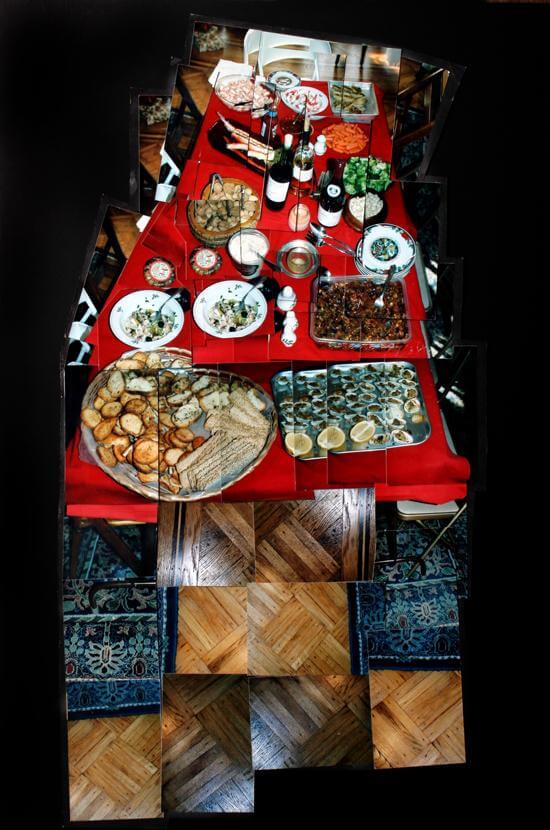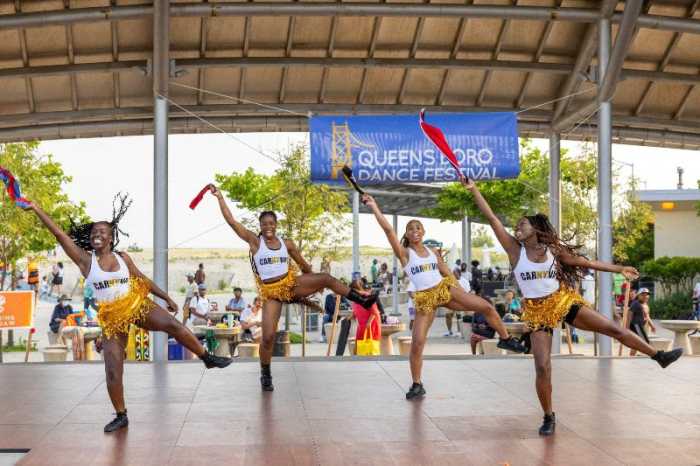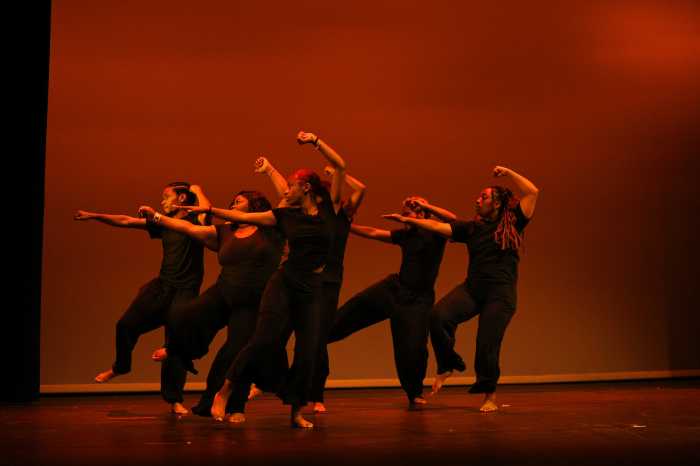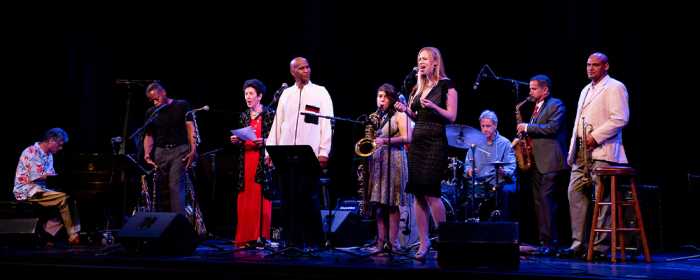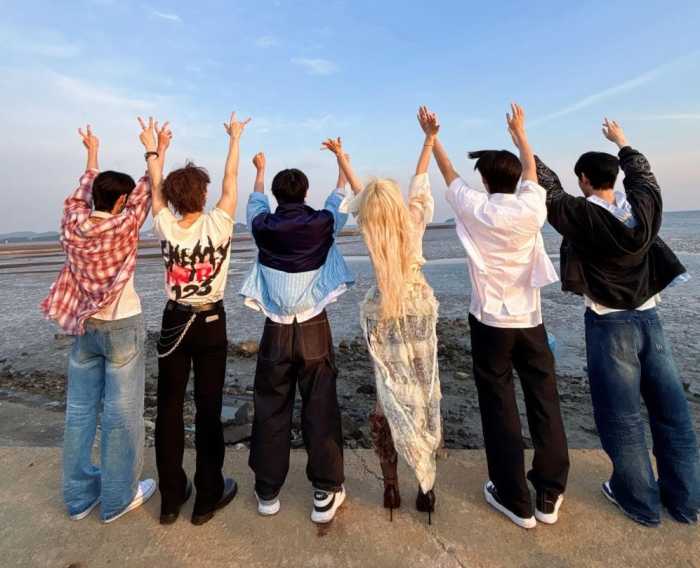By Arlene McKanic
“Heritage,” the Rockaway Artists Alliance exhibit now at sTudio 6 at Fort Tilden, is a smaller and somehow quieter exhibit than the art aficionado is used to from the Alliance. Perhaps it was because on the day she went there were only two people in the gallery — Penelope, sculpting an alabaster statue of an embracing man and woman a la Brancusi’s “The Kiss,” and another woman sitting at a table. (A couple of guys would come in later, briefly). There was no buffet, the bay doors were closed against the cold and a radio was quietly playing, but the scene was appropriate for the intimate works that make up the show.
The artwork, as the show’s title suggests, deals with legacies — the artists’ and others’. For the most part they’re personal works, like Carol Rickey’s oil on canvas “Seal Point” and Larisa Levina’s acrylic “Homeland,” which both show rural scenes.
Martha Elliot Killian has a watercolor, mounted next to a framed typewritten explanatory note, called “The Roots of Brooklyn.” It shows small houses in the old African−American settlement of Weeksville. Killian, a watercolor specialist, also has “Baggage Left on Ellis Island.” The painting here is dominated by a pile of trunks and baskets and in the foreground, some child’s sad and forgotten doll. She also has a couple of photos of Ellis Island next to a mounted page from a brochure explaining the history of the place. Beside them is a watercolor of the “Highlands of Scotland,” an evocative piece dominated by boulders, sheep and an eager border collie.
“Mangano Antipast,” by Gabrielle Mangano, is a photo montage of food and parquet floors and other things. There’s “The Bog Fields,” a misty watercolor of browns and greens by Amy Meade, and her “Thatched Roof Cottages, Ireland” in acrylic on canvas.
Rick Robles has photos of an American flag, the blue spotlights that soared up from the Manhattan skyline where the Twin Towers used to be, the sun setting behind the towers when they were still standing, and a dramatic photo of the Brooklyn Bridge in light and shadow against a sky full of clouds. Igor Gushchin’s “Spring in Crimea” shows the sea and a seaside village with red tiled roofed houses glimpsed between a great flowering tree and a planting of what looks like red red tulips.
There are more vivid photos by Anthony Curcio that seem to have been taken in Italy. In “No Rides Today,” Venetian gondolas, one of which holds a colorful blanket, are tied up at the pier. “Six Boats” shows six white and blue rowboats, also moored. There’s a photo of crumbling old walls called “Pompeii” and a dramatic shot of a “Flavian Amphitheater” where you can just see the silhouetted corner of the amphitheater and its fenestrations against the clouds — it reminds one of Robles’ bridge.
Ralph Petagna has redone what seem like old family photos. In “1937” two people — his parents? — stand beside one of those huge old cars. “1910” shows two women in period dress, one with her hand on the other’s shoulder — is it her daughter? “1908” is a group photo of uniformed men, whether soldiers or policemen the writer isn’t sure. Some have handlebar mustaches.
Lorraine Verdemare has an oil portrait of a “Klamath Tribe Woman of Oregon.” It shows a wizened old lady in black and white, as if after a photo. Maureen McGuire has another subtly colored work called “Day Dreaming” where a man in a little cap sits smoking and contemplating.
N.R. Mitgang has lovely mixed media works like “Noah and Sarah,” “Forefather,” “Two Bullets” and “One Less Piece of Strange Fruit,” all juxtaposing photos and the written word. Denis Macrae, who’s also a painter of wildlife, also has photos, including children performing an Irish step dance. One shows a pretty little girl with springy hair, the other the back of a line of young dancers. There’s also a high angle shot of Japanese cherry trees in bloom, which looks a lot like the cherry esplanade at the Brooklyn Botanical Garden.
Philip Emelianov has “The Night,” and “The Lake” moody works done in acrylics. Marie A. Lewis has “Mirabilia, Corpus 36,” a collection of intimate little collages — a car’s grillwork, ribbons, people’s faces — arranged together. And, near the studio’s front door, there’s Jessica Schulman’s pen and ink drawings “Greeting the New Year,” which shows a rabbi blowing on a shofar and “Rabbi,” which simply shows a rabbi wrapped in his prayer shawl.
All in all the effect of the show is to make the viewer think of their own families, and their own pasts.
If You Go
Heritage
When: Through Feb. 15; Gallery hours are Saturday, noon−4 p.m.; Sunday, 1−4 p.m.; and by appointment.
Where: Rockaway Artists Alliance, Fort Tilden, Gateway National Park, Rockaway
Cost: Free
Contact: 718−474−0861, rockart116@aol.com or www.rockawayartistsalliance.org

